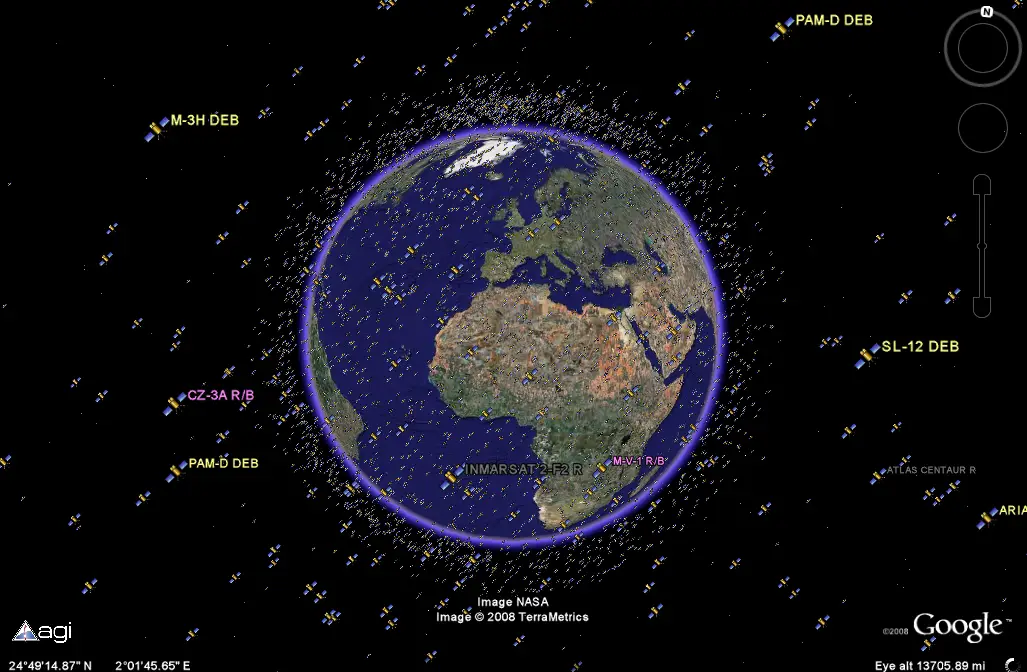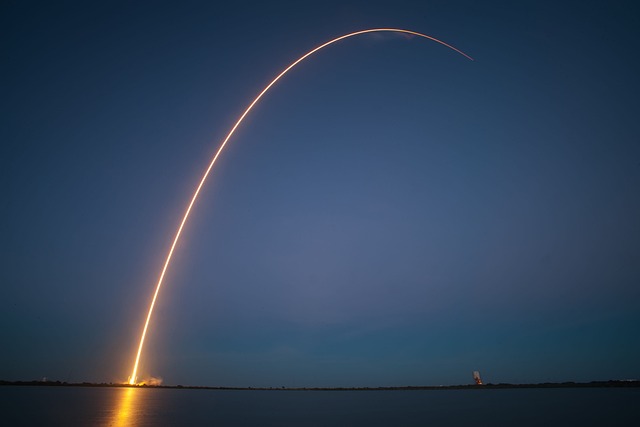
Small Satellite Applications
Small satellites, also known as smallsats or microsatellites, are spacecraft that weigh less than 500 kilograms. The development of small satellites has opened up a wide range of applications and uses that were previously limited by the high costs and complexity involved in traditional large satellite programs. Some of the key applications of small satellites include:
Earth Observation and Remote Sensing
One of the most common applications of small satellites is earth observation and remote sensing. Their low cost allows constellations of many smallsats to be deployed, providing frequent revisits and high resolution imaging of the earth’s surface. This has enabled improved monitoring of agriculture, deforestation, urban expansion, disaster response, and climate change. Some example earth observation smallsat missions include:
- Planet Labs’ Dove satellites – A fleet of over 150 cubesats continuously imaging all landmass on earth. Provides daily global datasets.
- Spire Global – A constellation of over 100 cubesats tracking global ship traffic and providing weather data.
- ICEYE – The first smallsat synthetic aperture radar (SAR) constellation, providing all-weather, day and night imagery.
- GHGSat – A fleet of smallsats monitoring greenhouse gas emissions from industrial facilities.
- HawkEye 360 – A cluster of smallsats detecting and geolocating a wide range of radio frequency signals for maritime, emergency response and spectrum analytics applications.
Communications
Small satellites can provide affordable communications infrastructure, bringing coverage to remote regions, ships and airplanes. Their low launch costs enable frequently refreshed constellations in low earth orbit. Examples include:
- Iridium NEXT – A 66 satellite constellation providing global satellite phone and data services.
- Globalstar – A network of 48 small satellites offering voice and data services.
- Orbcomm – A constellation of 35 smallsats providing global asset monitoring and SCADA services.
- Starlink – SpaceX’s growing megaconstellation of over 2000 cubesats aims to provide global broadband internet access.
- O3b – A medium earth orbit constellation that provides broadband backbone connectivity for telecom providers.
Space and Solar Physics
The low cost and quick development times of smallsats have enabled new architectures for studying space plasma physics, space weather, and solar astronomy. Multiple smallsats can sample spatial phenomena from different locations simultaneously. Examples include:
- NASA’s Magnetospheric Multiscale Mission (MMS) – 4 identically instrumented smallsats work in coordination to study magnetic reconnection events in Earth’s magnetosphere.
- NASA’s Cyclone Global Navigation Satellite System (CYGNSS) – A constellation of 8 microsatellites to improve hurricane forecasting by measuring surface winds over the oceans.
- NASA’s Parker Solar Probe – While not a smallsat itself, the probe relies on the Mars Cube One (MarCO) cubesats to relay data from its close encounters with the Sun back to Earth.
- The Miniature X-ray Solar Spectrometer (MinXSS) CubeSat – A 3U cubesat demonstration of measuring soft X-rays from the Sun, for improved solar flare monitoring.
Technology Demonstration
The low costs and quicker schedules associated with small satellites make them ideal platforms for demonstrating new space technologies and capabilities. Once successfully demonstrated in space, the technologies can be scaled up for inclusion in larger missions. Some technology demonstration smallsat missions include:
- Surrey Satellite Technology’s STRaND-1 – The first CubeSat to use a smartphone (a Google Nexus One) as its onboard computer.
- Planet Labs’ Dove satellites – Demonstrated the efficacy of large satellite constellations and frequent revisit imaging.
- The NASA Near Earth Asteroid Scout (NEA Scout) – A 6U cubesat demonstrating solar sail spacecraft propulsion and close observation of an asteroid.
- The RainCube CubeSat – A pioneering Ka-band precipitation radar to demonstrate miniaturized weather radar capabilities from low earth orbit.
- NASA’s Lunar Flashlight – A pioneering cubesat mission that will map ice deposits on the Moon’s surface using lasers.
Space Science
Smallsats provide low-cost platforms for science instrumentation, enabling missions that would be too expensive on larger platforms. The ability to launch multiple smallsats allows for constellations gathering synoptic measurements. Some example smallsat science missions include:
- NASA’s Lunar IceCube – A cubesat to prospect for water in ice, liquid, and vapor forms on the Moon from a lunar orbit.
- The BRITE Constellation – A coordinated fleet of nanosats studying stellar brightness variability to better understand the structure and evolution of stars.
- Astra – Developed by DARPA, a constellation of CubeSats in low earth orbit that provides continuous meteor monitoring.
- NASA’s Mars Cube One (MarCO) – The first cubesats to explore deep space, the pair of MarCO cubesats successfully relayed data from InSight during its Mars landing.
- Arkyd 6 – A 6U Cubesat built by Planetary Resources to test avionics and control algorithms for prospecting asteroids.
Education and Training
The standardized cubesat form factor combined with affordable launch opportunities on rideshares has made small satellites accessible platforms for education. University programs frequently use cubesat projects to give hands-on systems engineering and space mission design experience to students. Some examples include:
- More than 100 universities have built CubeSats launched into orbit through the NASA CubeSat Launch Initiative.
- The European QB50 project launched a network of 50 cubesats built by universities around the world to study the lower thermosphere.
- AAUSAT3 – A cubesat entirely designed, built, tested, and operated by students at Aalborg University in Denmark.
- SWIMSat – A cubesat ocean monitoring mission by students at the University of Texas at Austin launched in 2019.
- Ecuador’s NEE-01 PEGASO – The first satellite built in Ecuador, developed by students at Universidad Tecnológica Equinoccial.
Key Small Satellite Subsystems and Components
While smallsats come in various shapes, sizes, and complexities, there are several key subsystems and components that are common to most small satellite missions:
Attitude Determination and Control
The attitude determination and control subsystem (ADCS) is responsible for precisely orienting the satellite in desired directions and stabilizing it during imaging, communications, or science observations. Smallsats typically use miniature reaction wheels, control moment gyros, or magnetorquer coils for attitude control. Sun sensors, magnetometers, and star trackers provide attitude determination.
Command and Data Handling
The onboard computer, referred to as the command and data handling (C&DH) subsystem, processes commands, collects and formats telemetry, controls subsystems, and handles data storage. Increased processing capabilities of modern microprocessors have enabled high performance C&DH suitable for smallsats.
Electrical Power System
Small satellites generate electrical power through deployable solar panels and store energy in rechargeable lithium-ion batteries. Maximum power point tracking optimizes solar array output. The electrical power system distributes and regulates power to spacecraft components.
Communications
Smallsat radios enable communications in UHF, S-band, X-band frequencies using antennas such as monopoles, dipoles and patches. Amateur radio bands are often used. Communication rates vary from kilobits to megabits per second depending on antenna sizes, RF power, and ground infrastructure.
Propulsion
While many smallsats rely purely on orbital dynamics, some include propulsion for orbit changes, altitude control, or deorbiting. Cold gas, chemical, electrospray, and electric propulsion options exist at nano/micro levels suitable for smallsats.
Structures and Mechanisms
The spacecraft chassis or frame provides the structural basis. Deployable elements like solar panels and antennas increase functionality once on orbit. Materials like aluminum, carbon fiber, and plastics are common. Additive manufacturing is enabling new complex smallsat structures.
Thermal Control
Insulation, radiators, electrical heaters, and thermal coatings maintain smallsat component temperatures within allowed ranges. Passive techniques predominate small spacecraft thermal design due to lower complexity and power requirements.
Trends and Future Developments
Some key trends shaping the future of small satellite applications include:
Constellations Scaling Up
Recent years have seen rapidly expanding constellations of smallsats, especially for earth observation and communications. SpaceX alone has requests filed for 42,000 Starlink smallsats. Lower costs will enable constellations of unprecedented scales in the coming decade.
Standard Buses and Mass Production
Standardized smallsat buses built in mass production are lowering costs and accelerating development. Platforms like GomSpace’s nanosat buses, AstroDigital’s CORAL, and GAUSS’s SERIES spacecraft enable assembly line smallsat construction.
Rideshare and Dedicated Launches
Increasing launch opportunities through rideshares on large rockets as well as new dedicated smallsat launchers are enabling more rapid and flexible deployment of constellations. Launchers like RocketLab’s Electron cater specifically to the smallsat market.
Commercialization
Small satellites are enabling entirely new commercial space industries and revenue streams like global high resolution imaging, IoT connectivity, and space-based analytics. Commercial entities now far outnumber government smallsat missions.
InterSatellite Links
Smallsats are beginning to network together in orbits through intersatellite links, enabling distributed missions and real-time constellation connectivity without relying on ground stations. Laser links and software defined radios will expand this trend.
Onboard Processing Advancements
More powerful onboard computers, FPGAs, and advancements in software and AI will allow smallsats to increasingly process data and make decisions in orbit rather than relying on ground operations. Edge computing in space will unlock new use cases.
Miniaturized Propulsion
A new generation of miniaturized electric and chemical propulsion systems are being demonstrated on smallsats. These will enable smallsats to undertake more demanding operations like orbital transfers, formation flying, drag compensation, and end-of-mission deorbiting.
Lunar and Deep Space Smallsats
Small satellites are beginning to push beyond low earth orbit, with upcoming missions planned for lunar orbit, lunar surface operations, and interplanetary destinations like asteroids and Mars. Improving radiation tolerance and reliability will be key.
Satellite Inspector Smallsats
Small inspector satellites are being developed that can closely approach, image, and analyze other satellites in orbit. This will provide valuable inspection, diagnostics, repair, and maintenance capabilities.
Conclusion
In summary, the unique advantages of small satellites in terms of low cost, rapid development, frequent refresh rates, and distributed architectures have opened up a diverse range of impactful applications. From remote sensing constellations to interplanetary cubeSats, they have become a disruptive force shaping the 21st century space industry. We can expect small satellites to take on an increasing role across commercial, civil and defense space activities in the years ahead. Exciting innovations in smallsat technologies and capabilities will continue to unfold, further leveraging their advantages and enabling new mission applications.
Frequently Asked Questions
What are the different size classifications of small satellites?
Small satellites are classified by mass. The main size classes are:
- Minisatellites: 100 – 500 kg
- Microsatellites: 10 – 100 kg
- Nanosatellites: 1 – 10 kg
- Picosatellites: 0.01 – 1 kg
- Femtosatellites: 0.001 – 0.01 kg
Cubesats are a commonly used standardized format for nano and picosatellites based on 10x10x10 cm cubic units of approximately 1 kg each. 1U, 2U, 3U and 6U sizes are common.
What kinds of sensors and payloads are used on small satellites?
Common smallsat sensor payloads include:
- Visible and infrared imaging cameras
- Hyperspectral and multispectral imagers
- Synthetic aperture radar
- Ship and aircraft automatic identification system (AIS) receivers
- Meteorological sensors like thermometers, spectrometers, lightning mappers
- Radio frequency monitoring sensors
- Radiation environment monitors
- Technology demonstration experiments
How long do small satellites typically last?
Typical small satellite lifetimes in low Earth orbit are 1-5 years, limited by orbital decay from atmospheric drag. Smallsats designed for higher orbits can have much longer lifetimes – 10 years or more. Strict radiation tolerance and component screening is needed for smallsats venturing beyond Earth orbit to interplanetary space.
What kinds of propulsion systems are used by small satellites?
Small satellite propulsion options include:
- Cold gas thrusters
- Miniaturized chemical thrusters
- Electric propulsion like Hall effect and ion engines
- Micro pulsed plasma thrusters
- Electrospray thrusters
- Vacuum arc thrusters
Many smallsats have no propulsion at all and rely purely on orbital dynamics.
How are small satellites tested before launch?
Small satellites go through a rigorous pre-launch test campaign including:
- Vibration testing – ensures spacecraft can withstand launch stresses
- Thermal vacuum testing – verifies operation over expected temperature ranges
- Electromagnetic interference testing – confirms electronics don’t interfere with each other
- Radiation testing – evaluates tolerance to space radiation environments
- Day-in-the-life testing – operates spacecraft continuously over several days
- Shock and separation testing – validates readiness for launcher release into orbit
What launch opportunities exist for getting small satellites into space?
Popular smallsat launch options:
- Dedicated smallsat launchers like RocketLab’s Electron, Virgin Orbit’s LauncherOne, or Firefly Aerospace’s Alpha.
- Rideshares to orbit as secondary payloads on larger launch vehicles like SpaceX’s Falcon 9, Atlas V, Soyuz, and Ariane 5.
- Deployment from the ISS using vehicles like Northrop Grumman’s Cygnus, SpaceX’s Dragon, and JAXA’s Kounotori.
- Hosted payload arrangements with satellite operators.
- CubeSat form factor deployers like NASA’s CubeSat Launch Initiative.






